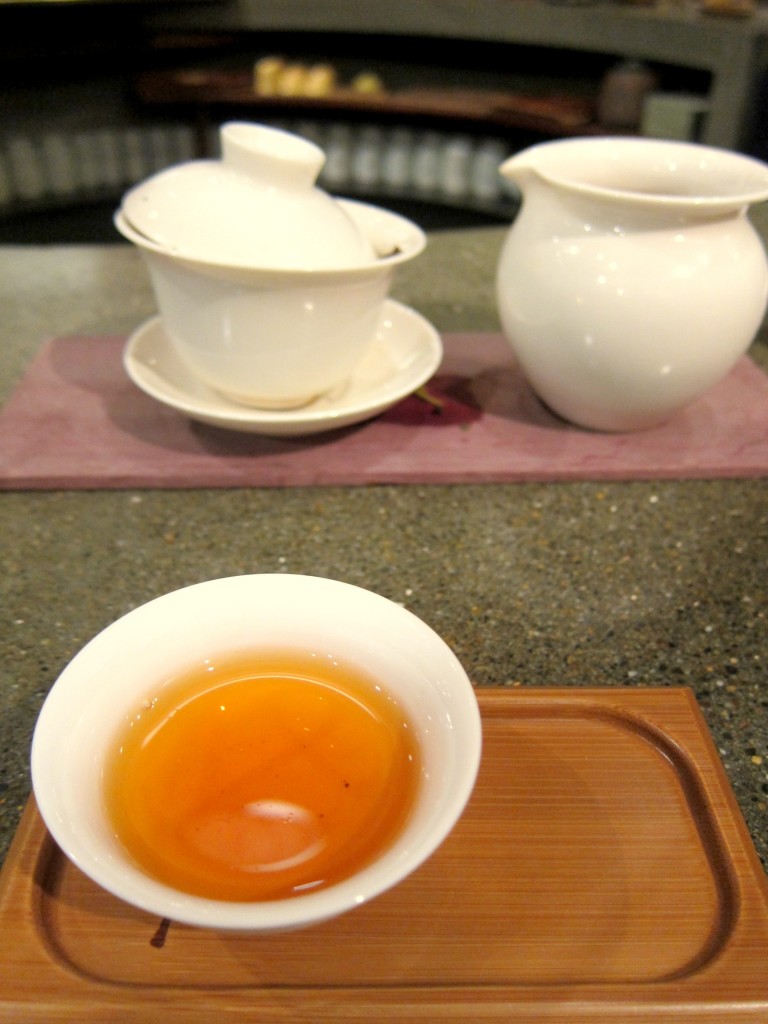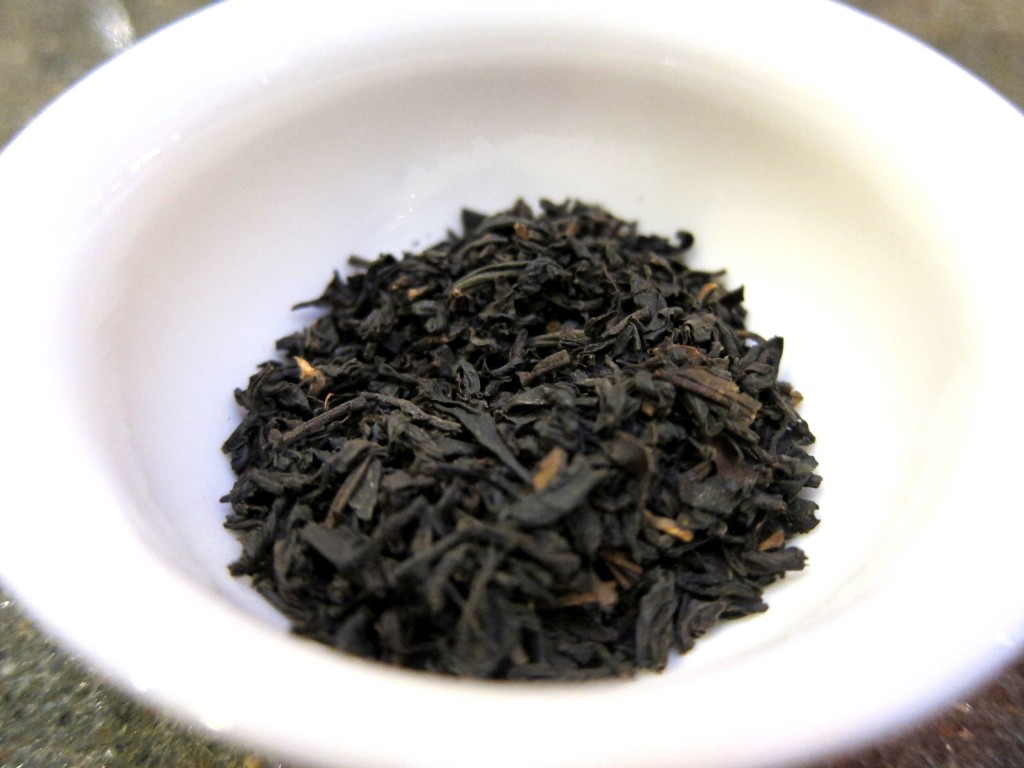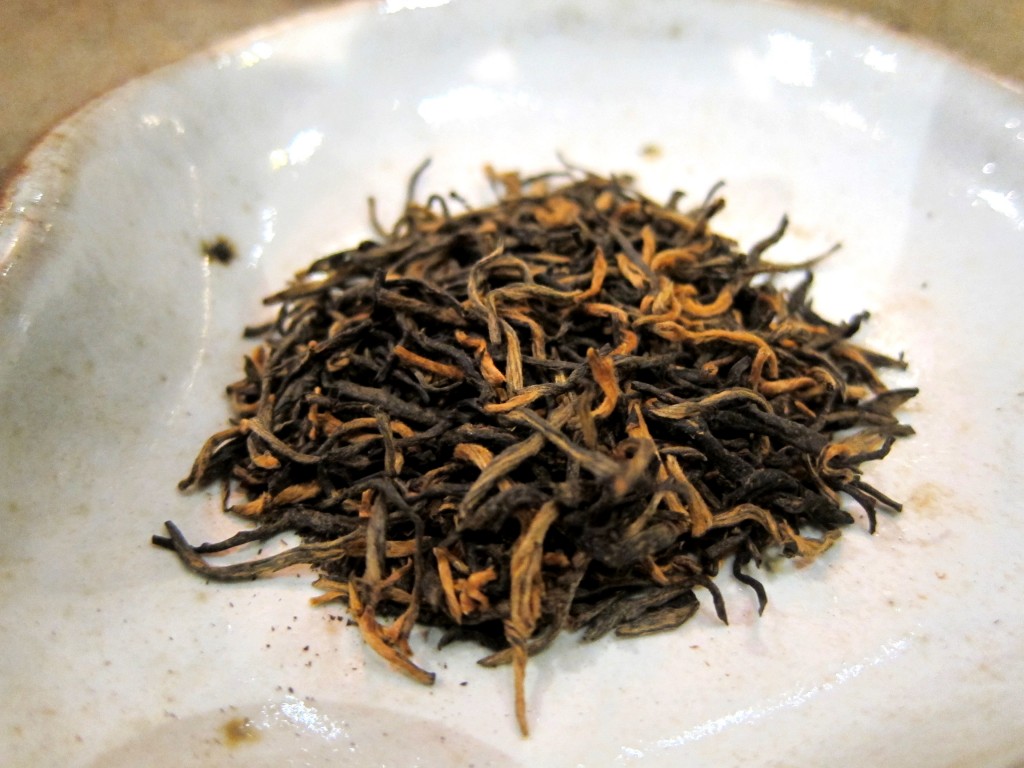
Black teas today. Black tea is 100% oxidized, and like green tea, it needs no rinsing step prior to steeping. The reason is its surface is too small because it was cut into shreds or tiny bits, the flavors are released as soon as it comes into contact with hot water. The steeping temperature: 205 F. The color: a brownish red, which is why it’s called hong cha (red tea) in Chinese.

1. Lychee red (black) tea:
Steeping time: ~ 45 s.
Sam said that the lychees and the tea leaves are steamed together to scent the tea, I would guess the steaming happens before the drying process. A few sites such as Tea Cuppa and Ten Tea claim that the tea is “scented with lychee peels”, which I find a little unconvincing. By lychee peel, do they mean the coarse red shell outside the fruit, or the thin translucent veil between the red shell and the fleshy aril? The former is too dry and bears practically no flavor, the latter is too tedious to get. It makes the most sense to use the flesh of the fruit itself.
The sweet juice and aroma of the lychee must mostly coat the tea leaves (instead of seeping through them), so the first steep is extremely sweet, but the sweetness fades with subsequent steeps.
Personally, it’s too sugary for my taste. It was more like a medicinal syrup than a tea.
2. Darjeeling First Flush
“First flush” means the first picking right after the spring rain. It smells grassy. Steep for about 10s, and you get a full-bodied, simple, unlayered, light and nutty tea. But for some reason (most likely the ridiculously short steeping time), we couldn’t get it right until the 4th or 5th time. We kept burning ourselves with the hot water (205 F) and oversteeping it by a few seconds, which resulted in a bitter mess.
Although this is classified as a black tea, it tastes somewhere between the Bao Chong and the charcoal fire roasted Tung Ting (minus the smokiness), both are Taiwanese oolongs. A little reading on Wiki reveals that almost all Darjeelings are not completely oxidized (<90%), so that explains why they're more like oolong.

3. Bailin Gongfu
The original style of black tea. Both the leaves (black) and the buds (brown in the picture) are used.
Steeping time: ~ 30 s. It smells like dried blueberries or sweet potato, and it tastes like a sweet root.
Description from Teance: “Leaves are whole, intact, uncut, and fully oxidized and heated to produce a malty, rich, cooked caramel viscosity, with chocolate and tobacco notes. Hand oxidation requires a process over 5 hours, and requires tremendous skill and patience. Made with the Da Bai or white tea varietal in Northern Fujian.”
(The Chinese oolongs we’ve had at Teance are also from Fujian.)